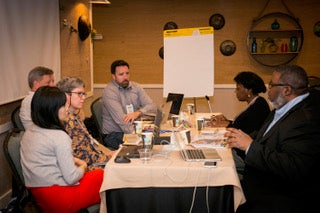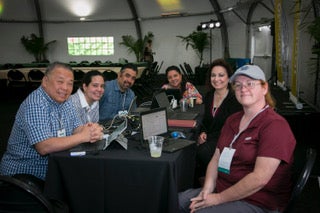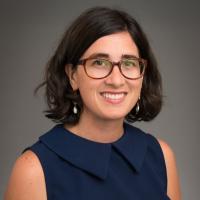
Collaborative Teams Tackling Big Challenges
Alone we can do so little, together we can do so much.
– Helen Keller
It’s perhaps a truism that strengthening education systems at scale requires coordinated effort from diverse stakeholders. Connecting the right people and organizations accelerates change and amplifies impact.
We’re seeing that truth in action through the Dana Center’s involvement with 100Kin10—named for its goal of adding 100,000 excellent STEM (science, technology, engineering, and mathematics) teachers to K–12 classrooms in 10 years.
 This network of more than 280 academic institutions, foundations, nonprofits, companies, and government agencies advances its work through collaborative groups focused on exploring—and proposing solutions to—key challenges in STEM education.
This network of more than 280 academic institutions, foundations, nonprofits, companies, and government agencies advances its work through collaborative groups focused on exploring—and proposing solutions to—key challenges in STEM education.
Dana Center staff members Lisa Brown and Frank Savina are contributing to the networked impact of 100Kin10 through their participation in 100Kin10 project teams.
“One of the powerful tactics 100Kin10 employs is connecting people, and that approach is vital to advancing learning in the field,” said Savina, a course program specialist with the Center's Higher Education team. “100Kin10’s organized approach and ability to bring together thought leaders from around the country is key to improving STEM teaching and learning.”
Brown and Savina’s project teams are organized around the initiative’s Grand Challenges, issues that the 100Kin10 network identified as root causes of our nation’s shortage of excellent teachers, particularly in STEM.
Brown leads a team focused on learning more about implicit bias and culturally responsive pedagogies, while Savina participates in a project team focusing on ways 4-year institutions of higher education can become more student-ready.
 “The variety of voices and perspectives in the project is absolutely necessary to our teams’ ability to make useful and informed recommendations around these complicated issues,” said Brown, a course program specialist for secondary mathematics on the K-12 team.
“The variety of voices and perspectives in the project is absolutely necessary to our teams’ ability to make useful and informed recommendations around these complicated issues,” said Brown, a course program specialist for secondary mathematics on the K-12 team.
These collaborative, nimble groups create the right environment to facilitate valuable learnings for the field.
“As each team member has researched and worked on this problem, the project itself has evolved,” Savina explained. “Instead of requiring us to stick to a rigid outline, 100Kin10 has given us the flexibility and space to explore as we’ve honed in on the most meaningful and relevant aspects of our topic."
“It’s surprisingly messy to do this work,” said Brown. “And it could get derailed easily. The unique tools and processes from 100Kin10 have helped us focus on the work and keep us going.”
Findings and recommendations from both project teams should be available this summer.
About the Author
Alison Kothe
On long car trips, I used to do long division for fun. The more paper I could use for a single problem, the better. While my husband loves to tease me about this, I still find joy in solving problems using elegant strategies. As a communications professional here at the Dana Center, I infuse my love of mathematics into the stories I share.
Get in Touch
We collaborate with states, districts, and teachers to develop innovative curricula, resources, and professional development.

